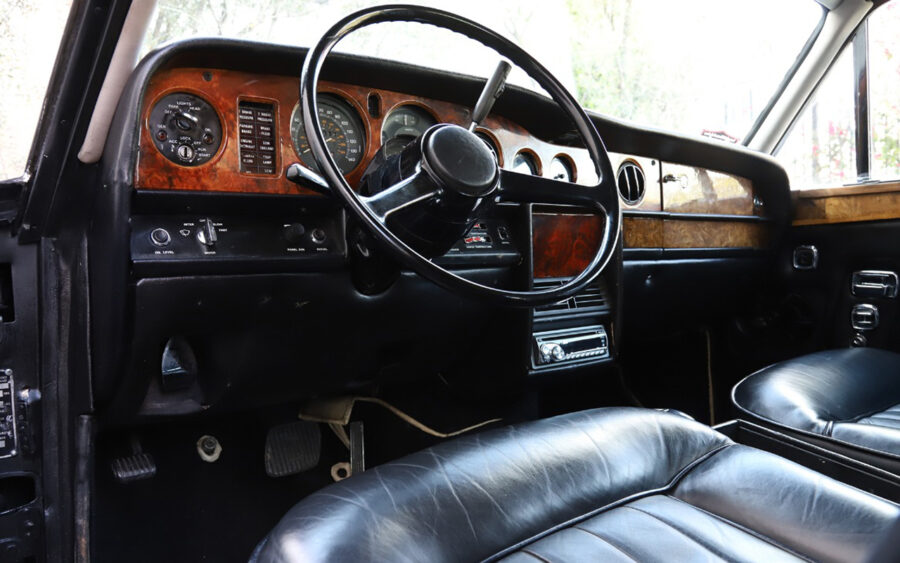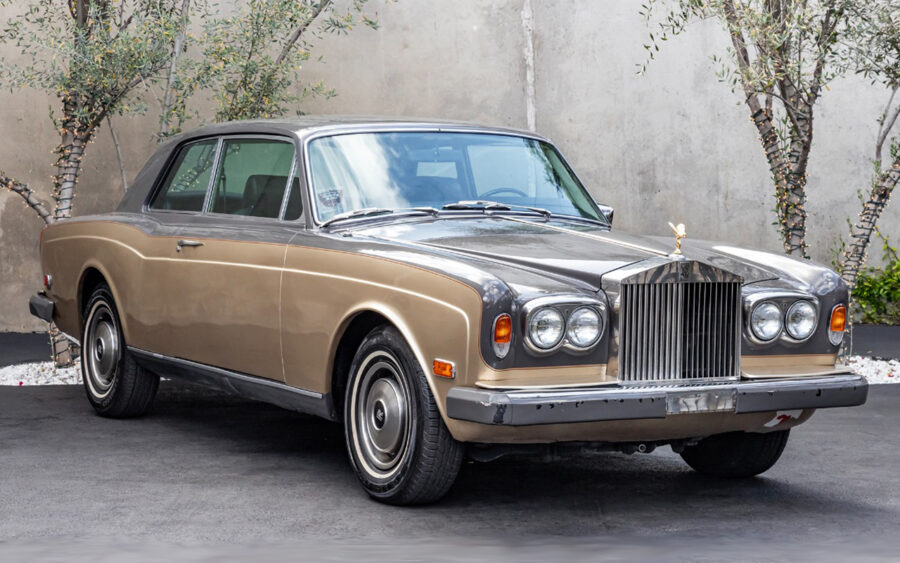The Rolls-Royce Corniche saw coachbuilding tradition continue into the era of unitary construction. Here’s our essential owner’s guide
Sponsored editorial in association with Beverly Hills Car Club
Words: James Howe, Jeff Ruggles
While older Rolls-Royce models utilised separate-chassis construction and were therefore the perfect base for coachbuilders create bespoke variations, the maker’s switch to unitary construction for its Silver Shadow complicated matters. The vast array of coachbuilders whittled down to two by the mid 1960s, with James Young soon joined by Rolls’ own Mulliner Park Ward in creating two-door versions of the latest Rolls-Royce saloon.
James Young introduced the first two-door Shadow-based car but its the ‘official’ product by Mulliner that’s better known for its iconic coke-bottle waistline and bespoke bodywork facilitated by ground-up manufacture rather than the conversion of an existing saloon. The car was shown at the 1966 Geneva Motor Show and cost £8,150 when new.
The two-door models gained the Corniche name in 1971, along with more power and revisions inside and out. Updates continued in line with the Silver Shadow saloon’s evolution into the 1980s, when eventually two-door saloon production was stopped. The Convertible survived right up until 1995 with plenty of its own upgrades along the way – not least with the introduction of turbocharged engines in run-out models.
Here’s how to avoid pitfalls and enjoy as painless an ownership experience as possible with this hand-finished icon of British luxury.

Engine, transmission and mechanicals
The Corniche shares its mechanicals with the Silver Shadow and uses the same tried and tested L-series V8 engine. Known issues to be aware of included corroded blocks as a result of incorrect coolant, as well as worn tappets. Head gasket failure can be an issue on post-1993 cars with Zytec electronic injection.
As ever with older cars, routine maintenance is essential as a preventative measure. Servicing needn’t be especially difficult as the technology is relatively straightforward. Service items are readily available but it’s worth remembering that prices run a bit higher than for some other classic cars – the V8 is not a mass-produced engine and thus service items aren’t made in particularly high numbers.
Both four-speed and the much more common three-speed transmissions are reliable in service, but fluid changes are recommended every 12,000 miles.
The braking system is complex and needs regular use and servicing to perform properly – something best left to a professional.
Tyres are worth factoring into any ownership budget. It’s preferable to fit original spec Avon items, though they aren’t the cheapest – especially in the 205 VR15 size fitted to earlier cars.

Bodywork and interior
The Shadow’s monocoque construction is a relatively complex form, and there were a number of unintended rust traps. Assuming you’re buying a solid car to start with, good rustproofing is key to keeping it that way. Let the sills rot out for instance, and you’re looking at thousands of pounds per side to put them right.
Fortunately, the vast majority of Silver Shadows left the factory with leather trim, which wears well and is easy to look after. Watch for water ingress though – Silver Shadows can leak if left outside, which can take its toll on woodwork, electrics and bodywork. Look for flaky lacquer and/or splits in the surface of the wood as indicators. Damage from the sun is also common.
Smaller items of trim such as switches and handles are in some cases shared with the later Silver Spirit; all are easily available through specialists.

Finding a good example
Given the potential financial issues of taking on an example with unforeseen problems, it pays to source your Corniche from a reputable dealer or specialist. It’s a rarer car than its Silver Shadow sibling so you may have to compromise on spec if you want to secure the best example.
If you have the requisite budget, looking abroad to drier climates for a solid example of any classic car is a good idea – especially those where rust can be a particularly expensive issue. Beverly Hills Car Club in Los Angeles, California is a good place to start your hunt; at time of writing, the two-tone 1978 example in these pictures was for sale for $29,950 with just over 27,500 miles on the clock.
Sponsored by Beverly Hills Car Club
The automobiles sold at Beverly Hills Car Club combine all the elements of its exclusive address in Los Angeles: cars for sale that are the very last word in tasteful elegance, chic and impressive sophistication, with careful attention given to each vehicle and each client. Both national and international customers are catered for, with a huge stock of classics to choose from.
For more information and to view the Beverly Hills Car Club stock, visit www.beverlyhillscarclub.com





